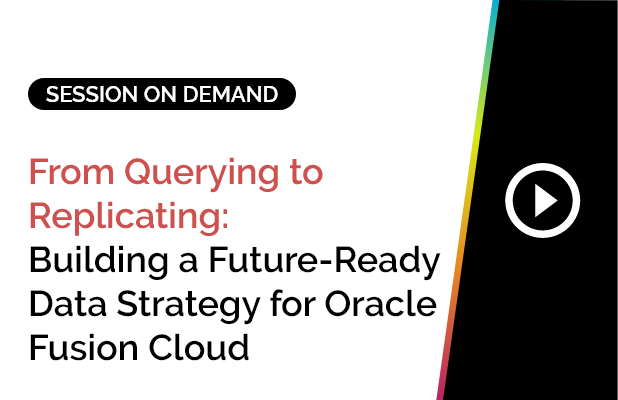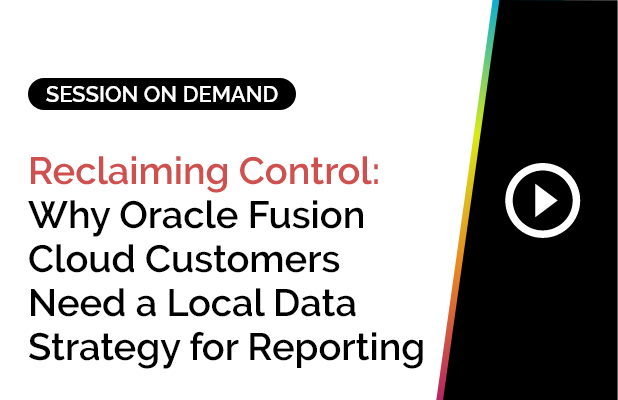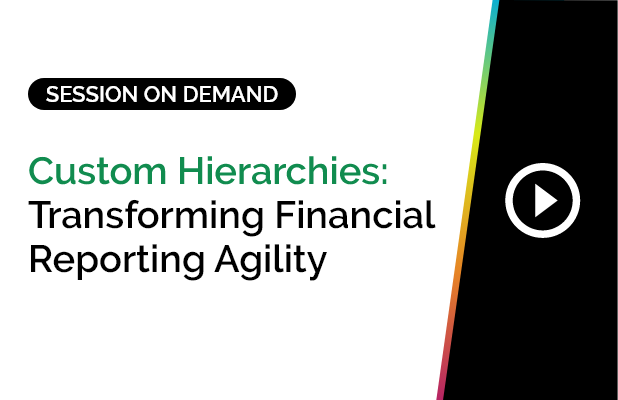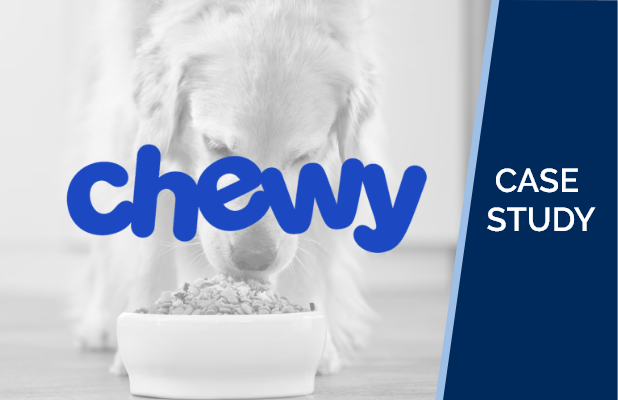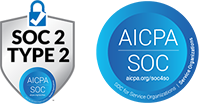What is ad-hoc reporting?
Ad-Hoc reporting is the process of creating reports on the fly, and these reports are not anticipated while coding the production report. Through Ad-Hoc reporting, you can analyze a specific business question that you had not previously thought of and that your existing report is not capable of answering.
Ad-Hoc, which has its origins in Latin, means “For this” in English. It refers to a task done for a specific reason. Ad-Hoc reporting, then, means creating reports for specific occasions. When it comes to business intelligence, Ad-Hoc reporting adds to regular reporting by enabling users to quickly build new reports from scratch or edit the reports made previously. All of this can be done without the involvement of the IT department.
Business Intelligence analysts provide end users with premade reports, which usually satisfy their business needs. However, some of these regular reports are static, and all the user can do is select them and run them. Ad-Hoc reports, however, give users the ability to customize variables which affect the output of the result. Ad-Hoc reports are indispensable and customizable, which helps executives and managers develop quick and targeted insights.
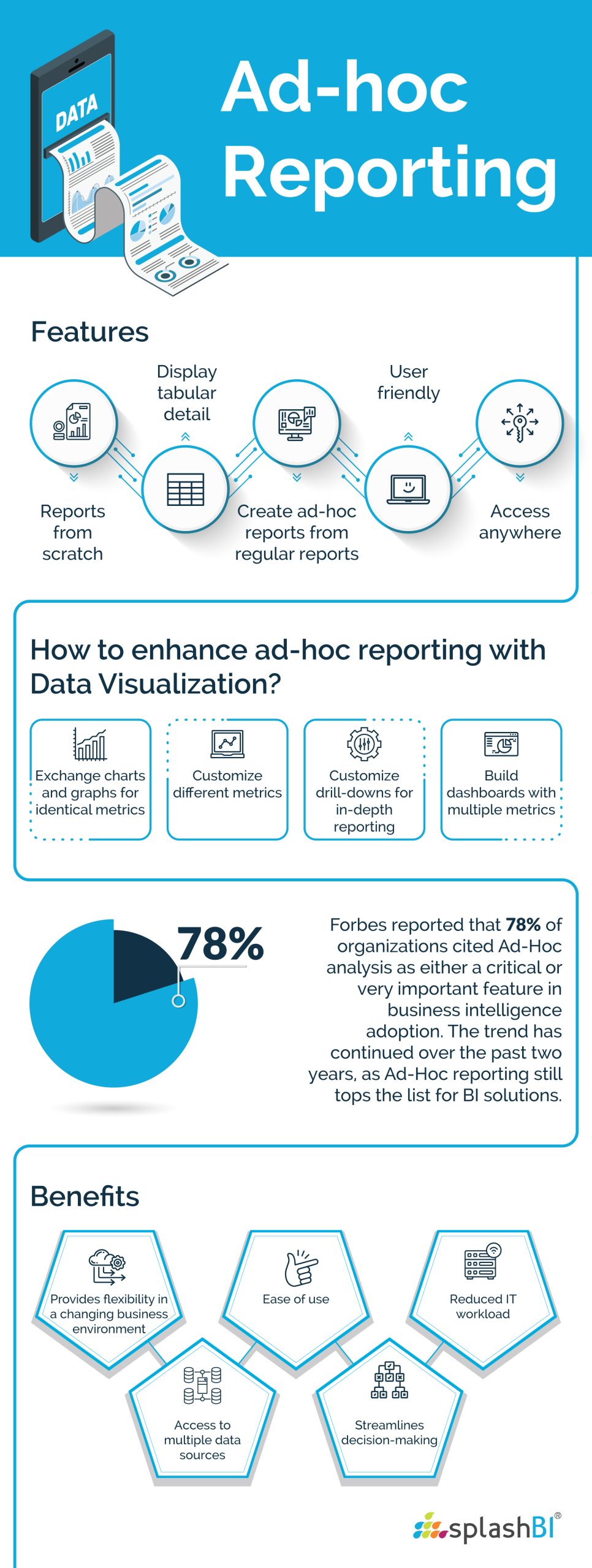
Features of ad-hoc reporting solutions
When evaluating a business intelligence application, it is important to look at the details, since Ad-Hoc reporting solutions vary in functionality. Let’s examine a few of the features to look for in Ad-Hoc reporting solutions:
1. Reports from scratch
When it comes to satisfying an emergent business need, regular reports do not fit the bill. Ad-Hoc reports provide end users with a blank canvas and well-groomed data to build their own report as needed.
2. Display tabular detail
It is very important for the end user to have access to tabular details while building a custom report. This access gives them granular control over all the data, not just averages, totals, and other aggregations.
3. Create ad-hoc reports from regular reports
It is important for a robust Ad-Hoc reporting solution to have the ability to clone regular reports and make changes to them, without changing the original report or having to build them from scratch.
4. User friendly
When it comes to business intelligence, the basics can already be very complex, so you would not want the new application to be even more overwhelming or confusing. The solution should satisfy users at either end of the technical spectrum.
5. Access anywhere
Data which can only be accessed on a personal desktop is of very little use. The end user should have access to their data on any connected device so that their reports are truly Ad-Hoc.
How to Enhance Ad-hoc Reporting with Data Visualization?
Data visualization is a process where data communication happens by encoding it as visual objects. When ad hoc reporting, which shares almost the same goal, works hand in hand with interactive data visualization; you find crystal-clear insights in your data. It is not possible using excel spreadsheets and pre-set reports. Understanding the importance and benefits of data visualization tools can help maximize the potential of ad hoc reporting by enabling quick data consumption and gathering valuable insights through expert visualization.
Let us now look at what options data visualization provides to take complete advantage of ad hoc reporting:
- Exchange charts and graphs for identical metrics
- Customize different metrics
- Customize drill-downs for in-depth reporting
- Build dashboards with multiple metrics
In April, Forbes reported that 78% of organizations cited Ad-Hoc analysis as either a critical or very important feature in business intelligence adoption. The trend has continued over the past two years, as Ad-Hoc reporting still tops the list for BI solutions.
Businesses today are preparing for the future by arming themselves with the ability to think, absorb, and move quickly. Good business analytics software helps you manage all of this at the drop of a hat. However, what we need in a great BI platform is one that is agile enough to look deep into our data and find out anything we want, with speed, even when things change.
The goal of Ad-Hoc reporting is to allow end users to ask specific questions of their company data, without the intervention of IT, to create a myriad of reports for different functions and purposes. Ad-Hoc reporting makes sense when multiple users see, understand, and act on data independently, while looking at the same numbers. Ad-Hoc reporting helps you make multidimensional data easy to work with for on the fly analysis. It allows you to generate meaningful custom reports without building formal templates.
Benefits of Ad Hoc Reporting
1. Provides flexibility in a changing business environment
Ad hoc analysis empowers users to keep modifying reports in real-time. It offers an interactive reporting experience to the user, where they can ask specific questions that suit their business needs. In a continually changing business environment, quick answers to specific questions are extremely important, and ad hoc data analysis provides just that!
2. Access to multiple data sources
When you have access to numerous data sources in one place, ad-hoc reports are easy to generate. Adding ad hoc reporting software to your tool gives you control of your dashboard.
It becomes easy to compare reports by adding elements like sliders, screen filters, and link reporting.
3. Ease of use
Since ad-hoc reporting and data analysis comes with an interactive dashboard, getting the right answers to all your questions becomes very easy. They allow end-users with the luxury of making decisions on the go, without the need to scrap through a chunk of data.
4. Streamlines decision-making
Ad-hoc reporting is nothing but an on the spot decision-making tool. Ad-hoc reports give you a sneak peek of the current state of your business through a specific lens like performance, marketing, sales, and others. These ad hoc reports are organized in an easy-to-read and sharable format for quick output. It makes data analysis a team effort. Read more
5. Reduced IT workload
Ad hoc reporting is straightforward to use for the end-user. The self-service nature of ad hoc reporting allows end-user to generate customized reports in niche areas without relying on people for technical assistance. Ad hoc reporting saves time and money spent on developers.
So How Do We Get Started?
SplashBI is an exceptional self-service reporting tool. Its Ad hoc reporting offers actionable intelligence to make data-driven decisions and have a positive impact on their ROI. SplashBI Self-Service reporting function allows you to utilize ad hoc reporting and generate powerful reports specific to your business area. SplashBI offers ad-hoc reporting within its platform of business dashboards.
We have over 100 varieties of charts, which can help you see what you need, when you need it. Generating reports in multiple formats such as a Pivot Table in Excel, CSV, PDF, HTML, and Pixel Perfect Reporting is our standout feature. With connections to a multitude of sources, you can explore your data from anywhere, be it on the cloud or on-site. SplashBI offers insightful pre-built content, powerful ad-hoc reporting, and in-depth dashboards, for immediate ROI.
Try SplashBI to leverage the hidden patterns within your company’s data to make impactful, data-driven decisions.
Conclusion
For any organization globally, an important function to have is reporting with the ability to share data. However, Ad-Hoc reporting provides companies with the added advantage of detailed and focused views. Ad-Hoc reporting also offers accessibility, streamlines data exploration, and produces optimal business results. In this technologically fast-paced world, Ad-Hoc reporting is a must-have component for quick, accurate analysis.


